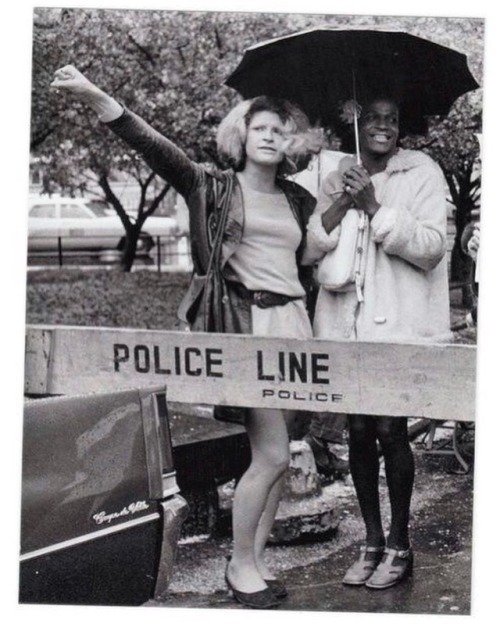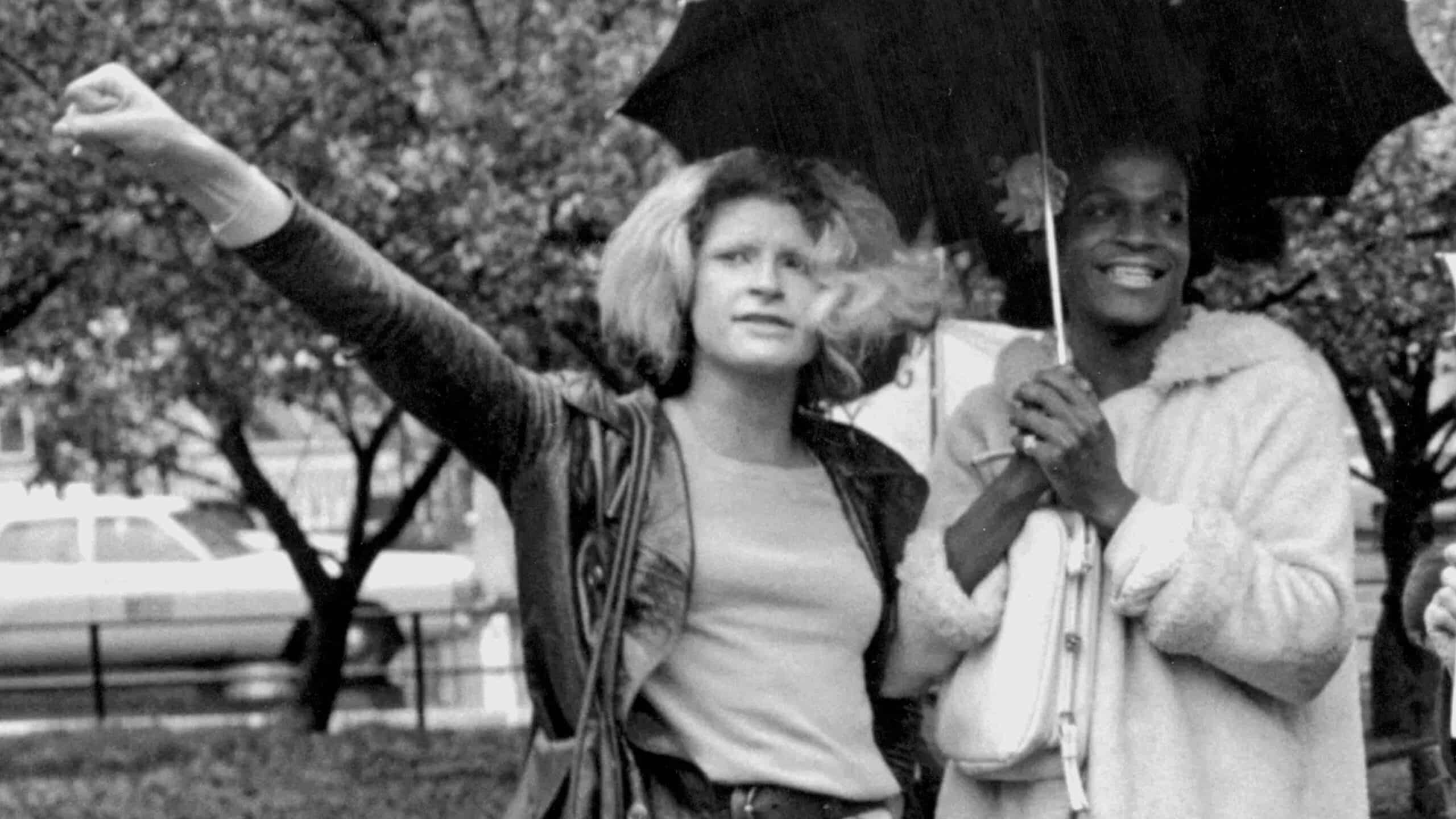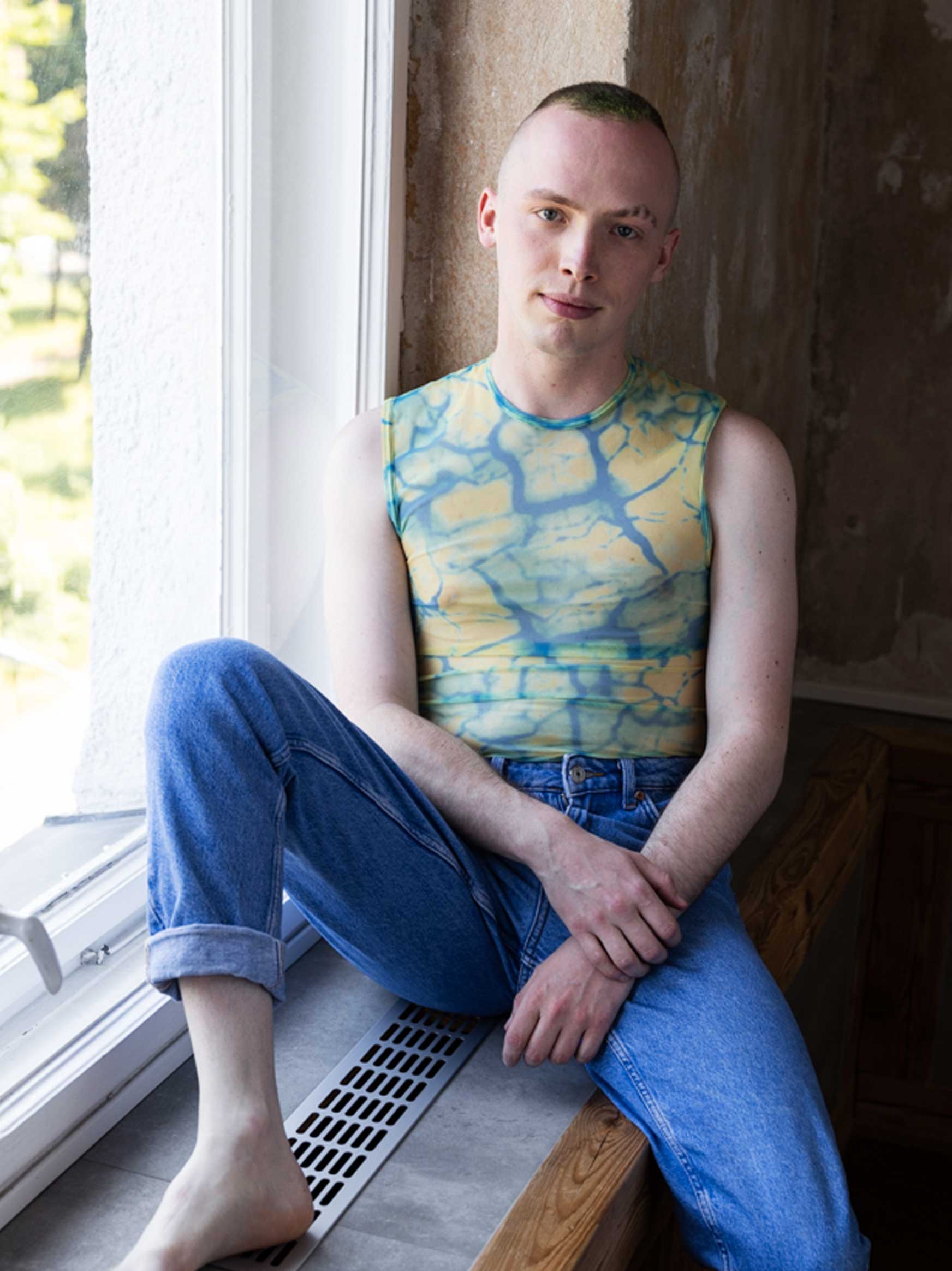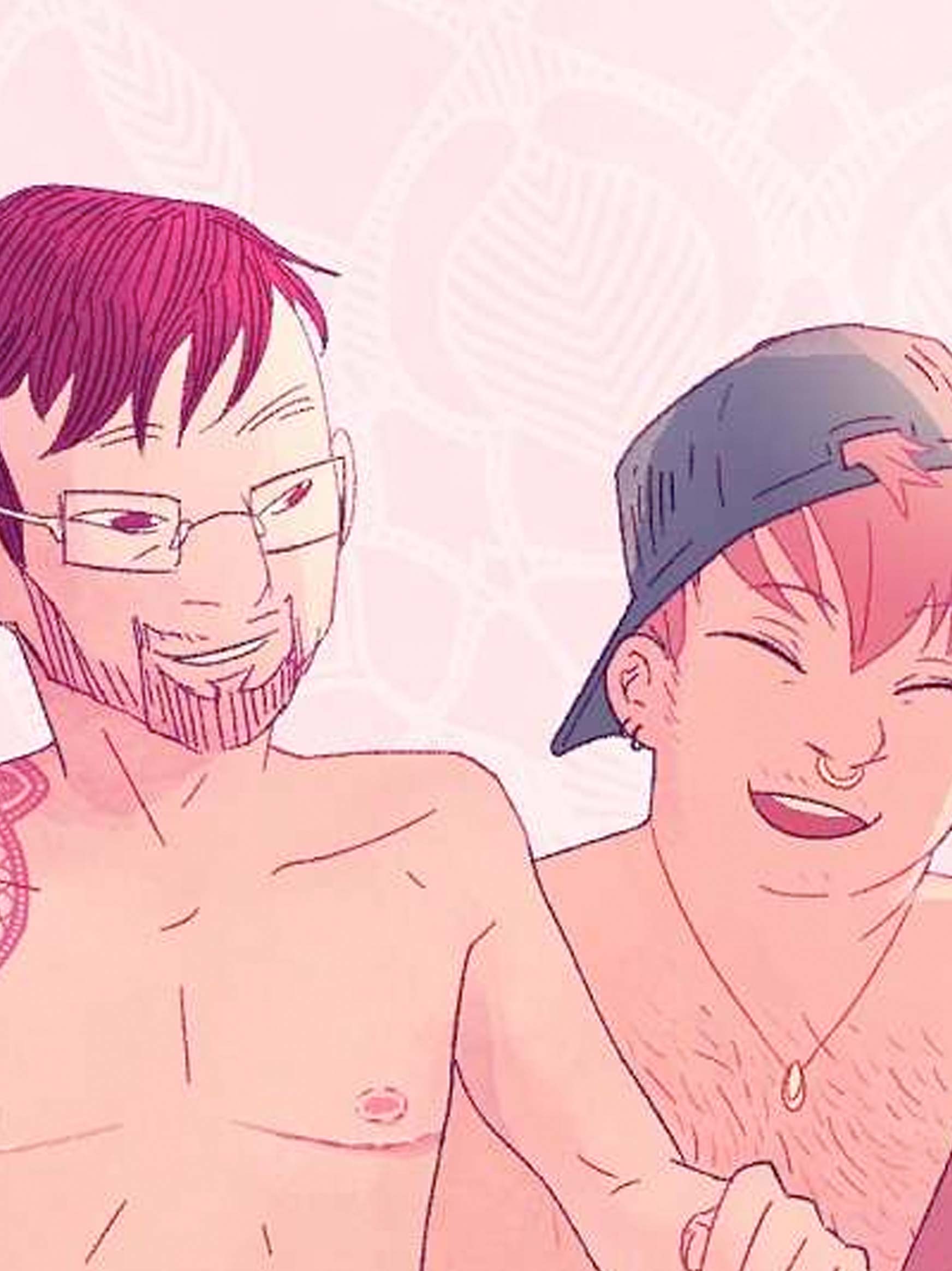One of the most important pioneers of the queer movement Marsha P. Johnson would have been 75 years old in August 2020. We celebrate her and explain why this is important. And necessary.

Not all heroes wear capes. Some are travelling in a dress. The really big ones wear flowers in their hair.
When I was young and stupid but already relatively gay in New York in the early 90s, I interviewed a bright-eyed old woman in a seedy bar: Stormé DeLarverie. There was no internet yet, but I was looking for my people's stories. So I had to talk to people who had been at Stonewall. Stonewall was the uprising of the LGBTIQ community against police violence in New York in 1969, riots that laid the foundation for our CSDs today. A friend sent me to Stormé, who had been a lesbian activist before Stonewall.
"Not always just fucking and drinking, baby."
After an hour, during which I mainly smoked and she talked, we had clarified that Stormé had been one of the ringleaders of the Stonewall Riots, but not the one who had thrown the legendary brick outside the Stonewall Inn. ("I wasn't throwing bricks! I threw a fit and got into a fight with the cops. That worked too."). We had also made it clear how I should get on with my life: "Don't just fuck and drink all the time, baby. There are more important things to do." But she was also a bit angry with me because I looked uncomprehending after she mentioned Marsha P. Johnson. ("Marsha?! Marsha P. Johnson! ... You chicks really don't know shit! Seriously!") Which was true. I was 21 and had no idea who Marsha P. Johnson was. She had died just a few years earlier under mysterious circumstances not far from where we were sitting. When her ashes were scattered in the Hudson River, streets in New York were closed to make room for all the mourners.
When her ashes were scattered in the Hudson River, streets in New York were closed to make room for all the mourners.
I went home a little dazed and learnt who Marsha P. Johnson had been: the "Mayor of Christopher Street". An icon, even then, even if she is still an icon for many more people today. And that she deserved it.
How Marsha P. Johnson came to New York
The trans* woman and future drag queen Marsha was born on 24 August 1945, four months after the end of the Second World War, in Elizabeth, New Jersey. Dad worked on the assembly line in a factory, mum was a housewife and the family was deeply religious. At the age of five, the future heroine began to wear dresses until the boys in the neighbourhood found this too silly, beat her up and also sexually assaulted her.
In 1963, at just 17 years old, Marsha went to New York with 15 dollars and big dreams in her pocket and was finally able to be first "Black Marsha" and then "Marsha P. Johnson". The Johnson came from the name of one of her favourite bars, the P. stood for "Pay it no mind".
The P. stood for "Pay it no mind".
Marsha's life was a continuing struggle: be it the police violence against people like her at the time, the laws that still prohibited drag queens from wearing dresses in public, the bourgeois ideas that many homosexuals had about life, the everyday racism. But she was very much herself from the start: Loud, friendly, beautiful. Nevertheless, she didn't have it as easy as the queens in "RuPaul's Drag Race". Sixty years ago, no designer in the world would have thought of designing a BlackShe didn't want to dress a penniless drag queen. So she did it herself: with rags from second-hand shops, cheap jewellery and always fresh flowers, which she got because she often spent the night under the tables of the New York wholesale flower market. She earned her money with small and large, but always artistically unique performances. And also with sex work. She later said in interviews that she had been arrested over a hundred times for this work.
The initial spark of the CSDs
Perhaps that's why she was so angry with the police on 24 June 1969, the start of the riots outside the Stonewall Inn, two months before her 24th birthday. Alongside Stormé, she is considered one of the people who helped spark the modern LGBTIQ movement that night. It is repeatedly reported that it was Marsha who threw the first brick in the direction of the police.
"That there is a Black The woman who started the protest marches back then has largely disappeared from people's minds today."
Activist and Podcaster Dominik Djialeu remembers Marsha on her 75th birthday: "Without Marsha and her friend Sylvia Rivera, today's CSD Pride would probably not exist in this form. Marsha threw the first stone on the night she stood up against arbitrary police violence, which later led to the Stonewall riots in New York. Unfortunately, I no longer sense any sign of a riot at CSDs today. And that there is a Black The woman who started the protest marches back then has now largely disappeared from people's minds. The core team of the Berlin CSD consists exclusively of white people who do not sufficiently address the concerns of black people and people of colour, which leads to Pride becoming a very white Pride has become. Of course, we have fortunately gained more rights today. However, these are rights that white and privileged people. But the uprising was meant for all of us, and especially for the most marginalised people. Marsha has moved us forward, but her mission is not yet complete."
Everything is right. Almost. The problem with the story about Marsha and the brick is that there are different opinions. While some eyewitnesses are convinced that Marsha threw the first brick, according to her own statements from later interviews, she only arrived at the Stonewall Inn at 2am. She had previously picked up her friend Sylvia Rivera from the park bench where she regularly spent the night. By then, the riot against the police was already in full swing.
"Trans* people played an important role then and now."
Also for trans* activist and IWWIT volunteer Manuel Garcia Johnson and Rivera are inextricably linked: "When I think of Marsha, I immediately think of Sylvia Rivera. Even on the 50th anniversary of Stonewall, we trans* activists still need to educate people about what 1969 really was, who we have to thank for the revolution, and that it was not a "gay movement", but that trans* people played an essential role then and now. Activism is not a choice, but a necessity and those who do not feel this necessity have privileges, which is also the case in our LGBTIQ+ community must be critically scrutinised."

History and legend
Nobody disputes that the two of them were the ringleaders of the events on that night and the following nights. It's just that dozens of legends now surround what exactly happened.
"The movement wanted to be 'respectable'. Trans* BPOC sex workers didn't fit into the picture."
No wonder. The official historiography of these days began just a few weeks later, with the rewriting of the story. After all, they wanted to use it to help bourgeois homosexuals gain more acceptance. This was not possible with two gender non-conforming BPOC sex workers and one Black Lesbians as protagonists. Gabriel_Nox Koenig, press and public relations officer at the Federal Association Trans* e.V.describes this process as follows: "Marsha P. Johnson, along with Silvia Rivera and many others who had initiated the movement, was forced out of the movement shortly after it began. The movement wanted to be "respectable" and they were Black Sex workers and sex workers of colour, and they were trans*. That didn't fit the picture. And that's why many LGBTIQA+ people no longer recognise Marsha P. Johnson's name. That has to change again."
It got even worse: just three years later, Johnson and Rivera were officially asked by the organisers of New York Pride to no longer take part. Drag queens were simply too controversial to be able to do politics with them. Of course, the two came anyway. And told the attendees what they thought of them. Heiner Schulze from the board of the Gay Museum explains why it is perhaps not so important whether Marsha threw the famous brick or not: "Stonewall, which was not the first protest by queer people in the USA against police violence and discrimination, should not simply be historicised as a past, completed event. Instead, Stonewall should be understood as an impetus to rebel loudly against injustice, just as Marsha did for decades."
"Stonewall should not simply be historicised as a past, completed event."
Throughout her life, Marsha cared for people who were like her and stood up for them wherever she could: She was a founding member of the Gay Liberation Front and a vocal participant in the GLF Drag Queen Caucus. Rivera and she also founded the Street Transvestite Action Revolutionaries (STAR) and, in 1972, the STAR House, whose family members were trans* and gender non-conforming youth from BPOC and Latinx communities.
Her work for Latinx and BPOC also makes her a heroine of many current discourses. Under a Facebook post about Marsha, we asked who already knew Marsha P. Johnson and our Facebook fan Lisa admitted: "I actually first heard of her in the wake of the current BLM movement, I'm somewhat ashamed to admit. I was aware of Stonewall, sure, but Marsha had never been mentioned to me by name before. That's very sad and a shame as we have her to thank for everything. Proof again: Representation Matters!"
Activism in often desolate living conditions
And because Marsha knew this too, she was also part of ACT UP when AIDS hit the New York communities relentlessly. In the twenty years after Stonewall, she co-founded every form of protest and activism that we still use today. All this without public funding, and often in desolate living conditions. But it wasn't just about herself: "We are all involved and can only do it together," was her life's credo. Her body was found shortly after New York Pride 2002. The circumstances of her death have still not been fully clarified.
The fact that we now know how important Marsha was to us all is primarily due to two films: "Pay it no Mind" from 2012 and "The Death and Life of Marsha P. Johnson" from 2017. Both documentaries show her as a central figure in the New York scene and the pioneer that she was. And as an artistic icon who commanded the same respect from Andy Warhol as every drag queen since.
"Marsha has lived community."
She would have been 75 years old on 24 August 2020. Her life is more important today than ever, because murders of trans* women of colour are still an everyday occurrence - and not just in the USA - and because the Trump administration is still actively pursuing anti-LGBTIQ policies in 2020. Open-mindedness, tolerance and togetherness were Marsha's credo. Her legacy is summarised by Ronald Zinke from the CSD Germany e.V. summarises: "In her fight - in her activism - Marsha has shown what community actually means and signifies. She managed to unite everyone and not differentiate. She lived community."
It's great that so many people now know who Marsha P. Johnson was and what she did. Let's celebrate her. Not just on her birthday.










